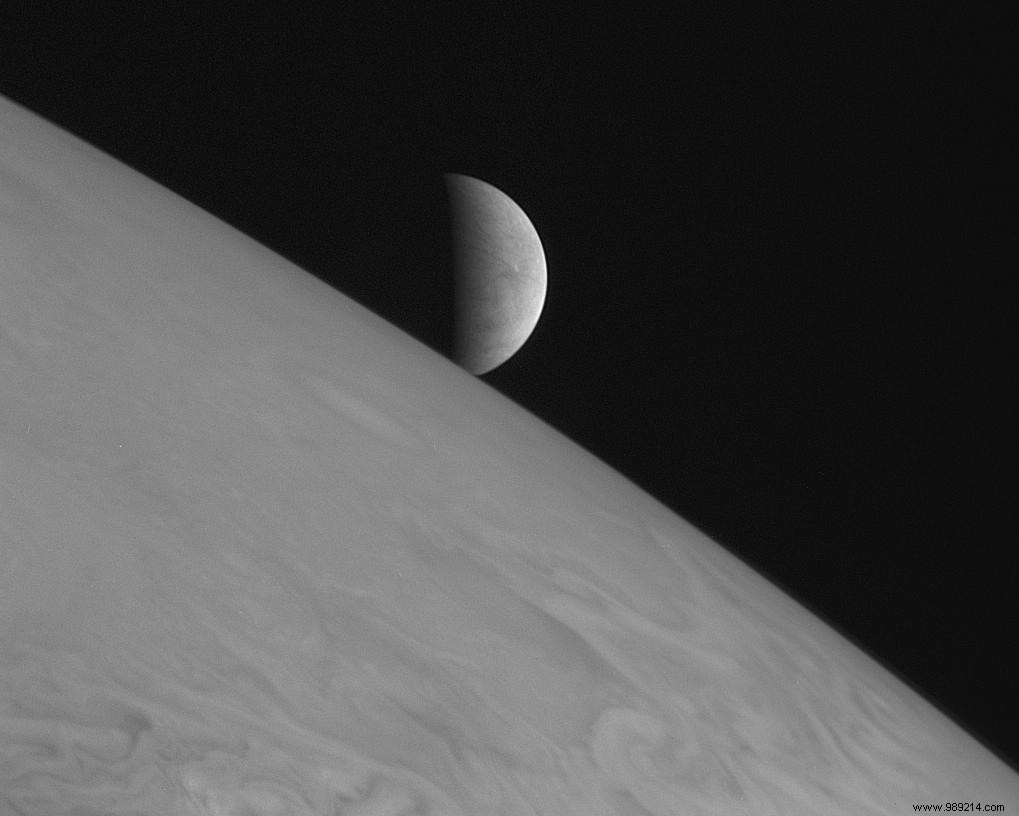Jupiter's moon Europa and its global ocean are likely to provide conditions for life…provided you avoid the surface! According to a recent study, the impacts of micrometeorites and the high energy radiation accelerated by Jupiter would indeed prevent any microbe from flourishing until at least thirty centimeters deep.
Like Mars or Enceladus, the Jovian moon Europa is one of the favored targets in exobiology. And for good reason, the data suggest the presence of a salty underground ocean under sixteen to twenty-four kilometers of ice, possibly in contact with its rocky core. In theory, such flirting could give rise to a whole variety of complex chemical reactions that could lead to the appearance and development of life.
Finally, Europa is geologically active, allowing periodic releases of water vapor from the surface. If microbial life does indeed exist on Europa, it could then spring from this buried ocean to find itself on the surface. But how deep should we dig to have a chance of spotting it?
Like the Moon, Europa is being hit hard by micrometeorites and by highly charged particles , trapped and accelerated by Jupiter's powerful magnetic field. Previous work has suggested that twenty centimeters of ice might be enough to protect these potential biomolecules from this extreme environment. A new study published in Nature Astronomy is nevertheless a little more pessimistic.

As part of this work, Emily Costello and her team at the University of Hawaii at Manoa modeled how the surface of Europa was disturbed by these "attacks came from the sky. According to their calculations, this incessant bombardment could actually stir up the first thirty centimeters of ice in a significative way. Thus, anything that might be in this thirty centimeter layer is likely to be brought to the surface and be exposed to radiation.
"Chemical biosignatures in areas shallower than this area may have been exposed to destructive radiation “, concludes Emily Costello. “If we hope to find pristine chemical biosignatures, we will have to look below the area where the impacts were gardened “.
This work may be of interest to NASA. Indeed, the American agency confirmed two years ago its intention to explore this moon as part of its Europa Clipper mission . The idea will then be to send a probe into the Jovian system for four years where it will be able to carry out several dozen low-altitude overflights of Europe. This work will thus allow an in-depth study of its surface icy. Researchers will also be able to select possible sites for further exploration.
As a reminder, the Europa clipper mission is due to take off in 2024 aboard a private rocket. The probe will arrive on site about five and a half years later, between 2029 and 2020 .